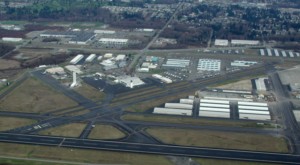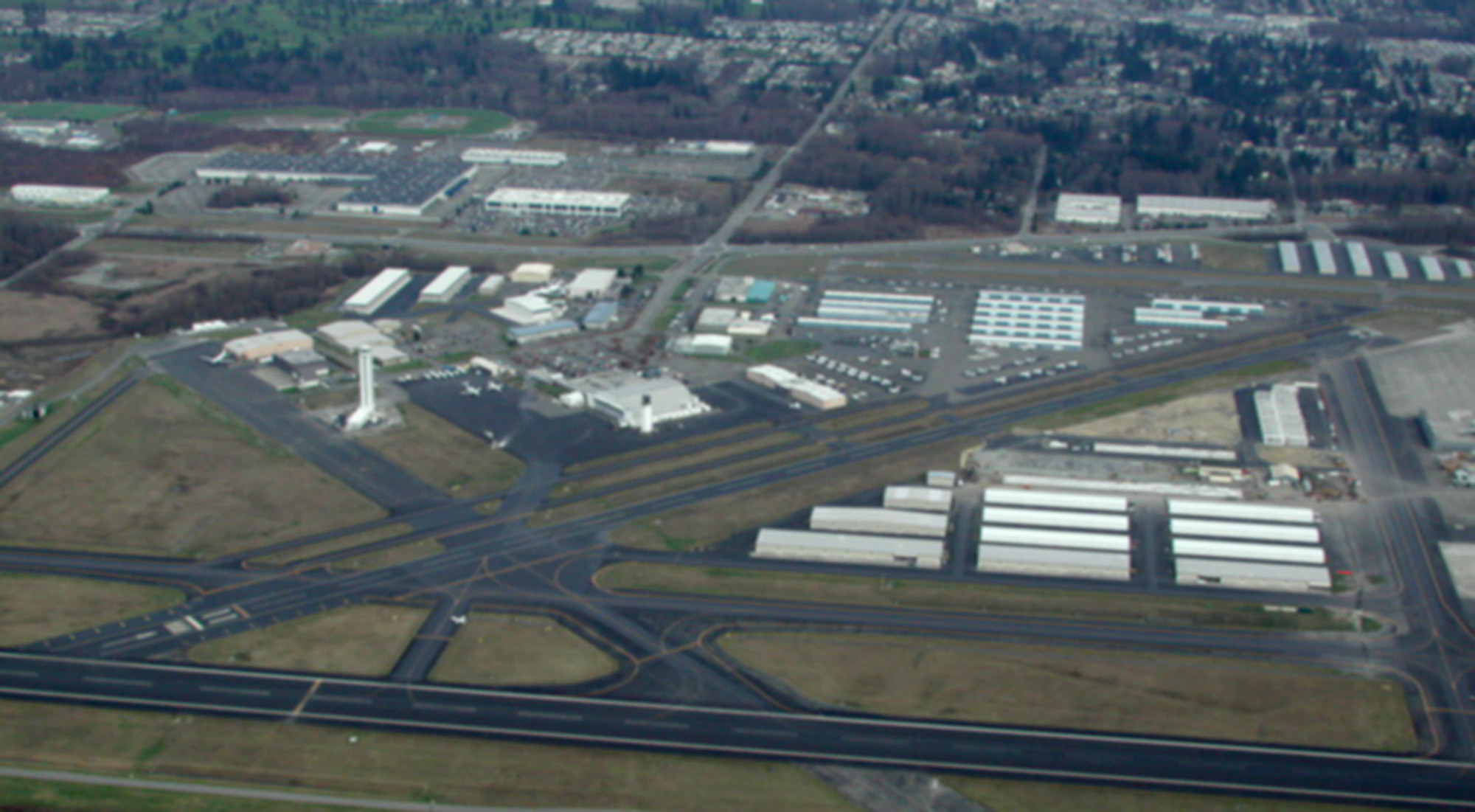By Terry Stephens

Snohomish County Airport, in Everett, is a significant part of Washington’s three-year study of airport facilities, needs and future expansion of aviation services. The state legislature is studying both commercial and general aviation needs.
Does the state of Washington’s network of airports meet air transportation needs across the state? Which airports are nearing capacity? How are airfields meeting the commercial and private needs of the aviation community? What facilities are provided, how many planes are based at each airport, and how many hangars are available?
The answers to those questions and many others are found in the Department of Transportation’s first phase of the most complete survey ever made of Washington’s airports by the department’s aviation division, headed by Director John Sibold. Ordered by the state legislature in 2005, the 246-page study completed in September provides a baseline of information needed to conduct the next two phases of the state’s Long-Term Air Transportation Study.
Earlier outdated surveys, less comprehensive than this one, have provided a picture of a strong and growing aviation system. In 2001, for instance, Washington’s 139 public-access airports generated 170,000 jobs, provided $4 billion in wages and accounted for $18.5 billion in total sales, making aviation one of the state’s most valuable economic assets. Because of aviation’s roles in providing air transportation, cargo movement, medical air-evacuation and search and rescue services, it’s also one of the state’s most essential assets.
The LATS effort first needed to establish, in detail, what facilities are already available and whether they have reached maximum capacity or are about to become overwhelmed by a demand for air services. Nisha Hanchinamani, the aviation division’s communications manager, said the second phase of the study is well underway. It should be completed by July 2007.
“No big surprises were in the first phase,” she said. “We just surveyed what we have. What will be interesting is the second phase, when we produce a 25-year forecast of aviation activity. When it’s compared to that baseline information, we’ll see what new facilities or expansion we’ll need to meet the state’s future needs.”
Sibold said the second phase of the study will produce detailed airport activity forecasts, market analyses of the commercial airports, a high-speed rail assessment, air cargo forecasts, future airport capacity assessments and a summary of system requirements.
In the last phase of the three-year study, funded primarily by Federal Aviation Administration grants, a 10-member Aviation Planning Council, appointed by Washington’s governor, will evaluate the capacity report and the forecast of aviation growth. The council will be responsible for recommending long-term airport development investments and priorities for the state’s airport system.
The LATS studies and recommendations also will become a part of state and national plans, including the Washington State Transportation Plan and the FAA’s National Plan of Integrated Airport Systems.
“Until now, a system plan hasn’t been in place to identify how to maintain and manage the long-term physical needs of Washington’s aviation system,” Sibold said, adding that the study will provide information to guide future investment in the state’s airport infrastructure.
The legislature asked for the study because the state’s aviation system is highly dynamic, creating a mix of shifting growth and expansion needs that local groups of citizens, environment organizations and even municipalities often oppose. Along with providing information for planning and funding decisions by the Aviation Planning Council, the LATS report is designed to create more public awareness of the need for an extensive, well-planned and well-maintained network of airports.
Already, the study has been helpful in updating information about the state’s aviation activity. More than 17 million commercial airline passengers each year pass through Washington’s airports, for instance, and 3.7 million aircraft land and depart from all of the general aviation and commercial airfields in the state annually. Also, more than 860,000 tons of air cargo are handled each year through the aviation network.
The council will determine which areas of the state need airport improvements and evaluate the long-term capacity needs of airports that are expected to reach maximum use by 2030. Once those regions are selected, the council will make recommendations for placing future commercial and general aviation airfields in necessary areas to meet the demand for aviation services. That move could bring about significant changes in the network.
By July 2009, the council is due to submit those recommendations to the governor, standing committees of the state legislature, the transportation commission and regional transportation planning organizations and agencies.
One of the unusual segments of the aviation network study will be reviewing and evaluating high-speed passenger transportation systems, facilities and services, including rail or magnetic levitation systems. The goal is to improve the efficiency of using airports to ease capacity problems and to connect major population centers with airfields. Completion of the evaluation of those options is due by July 2007, coordinated with the airport capacity and facilities market analysis in the first two phases of the LATS survey.
A major concern of state officials, however, is that despite the importance of aviation to the Washington economy and the high level of flying activity in today’s strong economy, the aviation network itself is in danger, if changes aren’t made to support it.
“The combined forces of benign neglect, inconsistent levels of activity, an antiquated funding base, a fluctuating economy and local land use conflicts could interact to threaten its very existence,” according to the LATS report.
Other issues revolve around the pressures of rapid growth on the state’s airports, researchers said. For instance, the state’s population has doubled in the past 30 years to 6.5 million, and that figure is expected to grow by another 2 million by 2025. Of the total increase, 1 million people are expected to settle in the Puget Sound area, 400,000 in southwest Washington, 200,000 in and around Spokane and 100,000 in the Tri-Cities area in the southeast.
Since population increases historically create increased aviation activity for business, freight, public safety and recreation, the FAA predicts a 25 percent increase in total aviation by 2025 and a 42 percent increase in commercial operations. Growth in general aviation in the state is expected to increase, including a 60 percent rise in business and corporate flying by 2030.
The LATS phase one report is available at [http://www.wsdot.wa.gov/aviation.LATS.htm].











